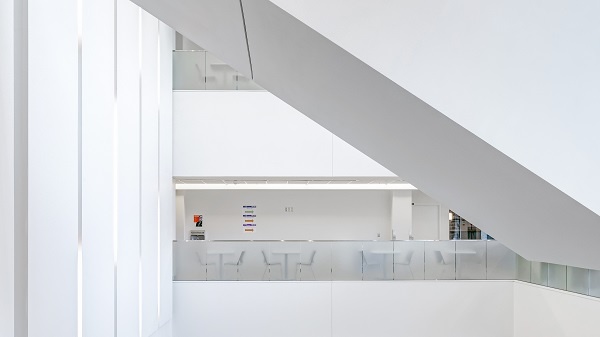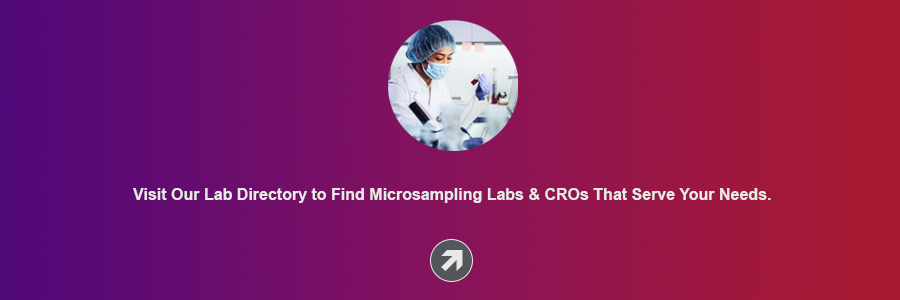Share this
how to improve clinical laboratory workflow
by Neoteryx Microsampling on Jun 19, 2018 3:56:00 AM

It’s the era of IT implementation, healthcare integration, and an ever-changing reimbursement landscape. Clinical laboratory workflow improvements can boost the efficiency and success of the laboratory. These improvements further extend to other areas including various departments and home care services. Remote microsampling technologies can help advance your lab's service offerings as well.
Here are some practices that are used by lab directors, executives, and other leaders in clinical research, clinical testing, and clinical trials in ongoing pursuit of improving laboratory workflow.
- Standardizing Laboratory Practices: Standardizing practices in the laboratory to align with practices of the entire hospital can minimize errors and reduce the time and costs associated with managing variability. For example, outpatient clinics which employ standardized procedures with other departments to manage specimen deliveries are able to work faster and smarter.
- Tapping into the Value of Dashboarding: The clinical laboratory setting is complex and must be understood before it can be controlled and improved. Since there are a lot of different tests arriving from different locations every day, data may become difficult to manage. It’s crucial to invest in software solutions that can provide easy access to such critical performance data.
- Software Solutions: The first step in understanding and improving processes is investing in solutions that provide easy access to critical performance data in a reporting format that is intuitive. A dashboarding system can also be implemented to track performance on a regular basis and also identify opportunities for process improvement to promote cost-cutting.
- Automating Processes: Implementing automated instrumentation and information systems to take over ordering, data entry, and accessioning as well as pre- and post-analytical testing tasks can help laboratories focus on higher value tasks and counter economic challenges.
- Breaking Down Silos: Establishing proper communication channels across all departments linked with the laboratory is crucial to achieving the high level of patient care coordination that contemporary competitive and reimbursement guidelines demand. All areas must be inclusive to maintain a competitive edge and utmost efficiency. Taking steps to improve clinical laboratory workflow is a positive move. Methods that can transform the lab from a cost center to a revenue center should also be evaluated for return on investment.
- Considering New Technology: It is important to understand and properly consider important new innovations for the lab such as blood microsampling technology. These technologies have the potential to improve clinical laboratory workflow.
Talk to experts in the microsampling field to get a picture of what these new technologies may mean for you, and how they can prepare your lab for a streamlined and more efficient future.
Image Credits: Trajan, Neoteryx, Shutterstock
Share this
- Microsampling (206)
- Research, Remote Research (119)
- Venipuncture Alternative (105)
- Clinical Trials, Clinical Research (83)
- Mitra® Device (73)
- Therapeutic Drug Monitoring, TDM (51)
- Dried Blood Spot, DBS (39)
- Biomonitoring, Health, Wellness (30)
- Infectious Disease, Vaccines, COVID-19 (24)
- Blood Microsampling, Serology (23)
- Omics, Multi-Omics (21)
- Decentralized Clinical Trial (DCT) (20)
- Specimen Collection (18)
- Toxicology, Doping, Drug/Alcohol Monitoring, PEth (17)
- Skin Microsampling, Microbiopsy (14)
- hemaPEN® Device (13)
- Preclinical Research, Animal Studies (12)
- Pharmaceuticals, Drug Development (9)
- Harpera Device (7)
- Industry News, Microsampling News (5)
- Antibodies, MAbs (3)
- Company Press Release, Product Press Release (3)
- Environmental Toxins, Exposures (1)
- July 2025 (1)
- May 2025 (1)
- April 2025 (2)
- December 2024 (2)
- November 2024 (1)
- October 2024 (3)
- September 2024 (1)
- June 2024 (1)
- May 2024 (1)
- April 2024 (4)
- March 2024 (1)
- February 2024 (2)
- January 2024 (4)
- December 2023 (3)
- November 2023 (3)
- October 2023 (3)
- September 2023 (3)
- July 2023 (3)
- June 2023 (2)
- April 2023 (2)
- March 2023 (2)
- February 2023 (2)
- January 2023 (3)
- December 2022 (2)
- November 2022 (3)
- October 2022 (4)
- September 2022 (3)
- August 2022 (5)
- July 2022 (2)
- June 2022 (2)
- May 2022 (4)
- April 2022 (3)
- March 2022 (3)
- February 2022 (4)
- January 2022 (5)
- December 2021 (3)
- November 2021 (5)
- October 2021 (3)
- September 2021 (3)
- August 2021 (4)
- July 2021 (4)
- June 2021 (4)
- May 2021 (4)
- April 2021 (3)
- March 2021 (5)
- February 2021 (4)
- January 2021 (4)
- December 2020 (3)
- November 2020 (5)
- October 2020 (4)
- September 2020 (3)
- August 2020 (3)
- July 2020 (6)
- June 2020 (4)
- May 2020 (4)
- April 2020 (3)
- March 2020 (6)
- February 2020 (3)
- January 2020 (4)
- December 2019 (5)
- November 2019 (4)
- October 2019 (2)
- September 2019 (4)
- August 2019 (4)
- July 2019 (3)
- June 2019 (7)
- May 2019 (6)
- April 2019 (5)
- March 2019 (6)
- February 2019 (5)
- January 2019 (8)
- December 2018 (3)
- November 2018 (4)
- October 2018 (7)
- September 2018 (6)
- August 2018 (5)
- July 2018 (8)
- June 2018 (6)
- May 2018 (5)
- April 2018 (6)
- March 2018 (4)
- February 2018 (6)
- January 2018 (4)
- December 2017 (2)
- November 2017 (3)
- October 2017 (2)
- September 2017 (4)
- August 2017 (2)
- July 2017 (4)
- June 2017 (5)
- May 2017 (6)
- April 2017 (6)
- March 2017 (5)
- February 2017 (4)
- January 2017 (1)
- July 2016 (3)
- May 2016 (1)
- April 2016 (2)



Comments (2)